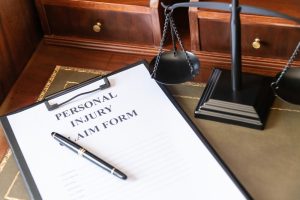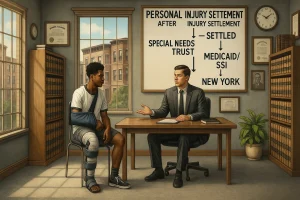One of the most critical questions in any personal injury case is: Who was at fault? In New York, determining fault is key to securing compensation—and it’s not always black and white. Whether you were injured in a car crash, a slip and fall, or another accident, understanding how fault is assessed can help you protect your rights.
What Does “Fault” Mean in a Personal Injury Case?
In legal terms, fault refers to the party whose actions (or inaction) caused the accident. This could be a person, a business, or even a government entity. Proving fault involves showing that the responsible party was negligent—that they failed to act with reasonable care, and that failure led to your injury.
New York’s Comparative Negligence Rule
New York follows a rule known as pure comparative negligence. This means that:
- Each party’s percentage of fault is calculated
- You can still recover damages even if you were partially at fault
- However, your compensation is reduced by your percentage of fault
Example:
If you’re awarded $100,000 but found to be 30% at fault, you’ll receive $70,000. This rule makes it especially important to accurately establish the facts and defend your position.
How Is Fault Proven?
- Police Reports
- Crucial in auto accident cases
- May include the officer’s opinion on who was at fault
- Often used by insurance adjusters and lawyers
- Witness Statements
- Independent third-party accounts can be powerful evidence
- Help clarify what happened, especially in disputed cases
- Photos and Videos
- Images of the scene, damage, and injuries
- Surveillance or dashcam footage can provide unbiased proof
- Expert Analysis
- Accident reconstruction specialists, medical experts, or engineers may be brought in
- Help establish how and why the accident occurred
- Your Own Documentation
- Notes, photos, and timelines can support your claim
- Medical records showing the extent of your injuries
Can Multiple Parties Be at Fault?
Yes. In many cases, more than one party may share responsibility:
- A driver and a manufacturer (if faulty brakes contributed)
- A property owner and a maintenance company
- You and another individual (if both made errors)
An attorney can help determine who all the liable parties are—and hold them accountable.
Why Fault Matters
Fault directly impacts:
- Your ability to recover compensation
- The amount you’re entitled to receive
- Whether a settlement is fair
Insurance companies will often try to shift blame or downplay your injuries to reduce their payout. That’s why having legal representation is essential to protecting your interests.
Don’t Let Fault Derail Your Claim
Determining fault can be complex, especially under New York’s comparative negligence rules. But with the right legal guidance, you can build a strong case and pursue the compensation you deserve.
Contact the Personal Injury Law Firm of Figeroux & Associates
Schedule a free consultation today!
Call 855-768-8845
Visit www.askthelawyer.us
Click Here to Schedule a Consultation with Figeroux & Associates Today!



